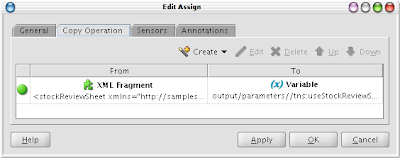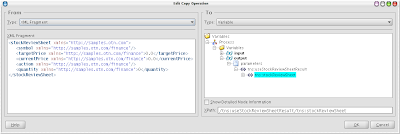But after some further investigation it was clear, that Oracle has released a new forums version with some web 2.0 features (tag cloud, FAQ in a wiki). One bad thing is, that OTN has not informed anyone about this upgrade and no documentation is available (see this discussion). This discussion shows one of the new features (emoticons) but this is not really needed on a technical forum.
So what is new?
1. For helpful answers you will get 5 points and for correct answers you will get 10 points. But there is no documentation, who is responsible for making this decision...

2. Related to this new scoring system the threads in the forums can have some new states like "Answered" or "Unanswered" questions:

3. After you have posted a new thread, you will see this:
 If you click on question, you will be guided to this page:
If you click on question, you will be guided to this page:
4. Each post has an icon added, which show "click to report abuse..." as tool tip.
 But just now there is this error ( 10:06:22 UTC+1), if you try to load forums.oracle.com
But just now there is this error ( 10:06:22 UTC+1), if you try to load forums.oracle.com500 Internal Server Error
But this happens on each new software release ;-)So let's what the next week will show us...
UPDATE:
On the FAQ (wiki) you can find the following
What software do they run on?
Oracle Discussion Forums run on version 4.2 of Jive Forums. An ungrade to v 5.5, originally scheduled for July 1, has been delayed.





